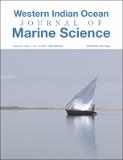| dc.description.abstract | The world’s oceans have seen significant declines in phytoplankton-the primary food source in the marine environment. This decline in primary producers is likely to impact the food chain and functions of most coastal and marine
ecosystems. Despite being one of the most productive marine fishing grounds in the Western Indian Ocean (WIO)
region, the information about phytoplankton biomass in the Rufiji-Mafia Channel is poor. This study aimed to narrow this information gap by assessing phytoplankton biomass in the Channel and its association with the decline
of the prawn fishery. We combined in-situ measurement and ocean colour satellite data to determine and assess
trends in phytoplankton biomass and sea surface temperature between 2002 and 2014. These trends were related
to a declining prawn fishery in the Channel. While phytoplankton displayed a significant declining trend during the
southwest monsoon, sea surface temperature showed an insignificant increasing trend. Phytoplankton declined at
the rate of 1.2 percent per year (tau = 1.2, z = 3.52, p = 0.004) between 2002 and 2014. This declining trend in Chl-a
matches well with the decreasing trend in the prawn fishery (tau = 0.57, z = 3.39, p = 0.0006) and the insignificant
increasing trend in sea surface temperature (tau = 0.02, z = 0.43, p = 0.66). This study provides quantitative evidence
of trends in chlorophyll and SST and the link with trends in the prawn fishery, which increases our understanding
of the changes in marine primary productivity in the coastal waters of Tanzania. | en_US |

